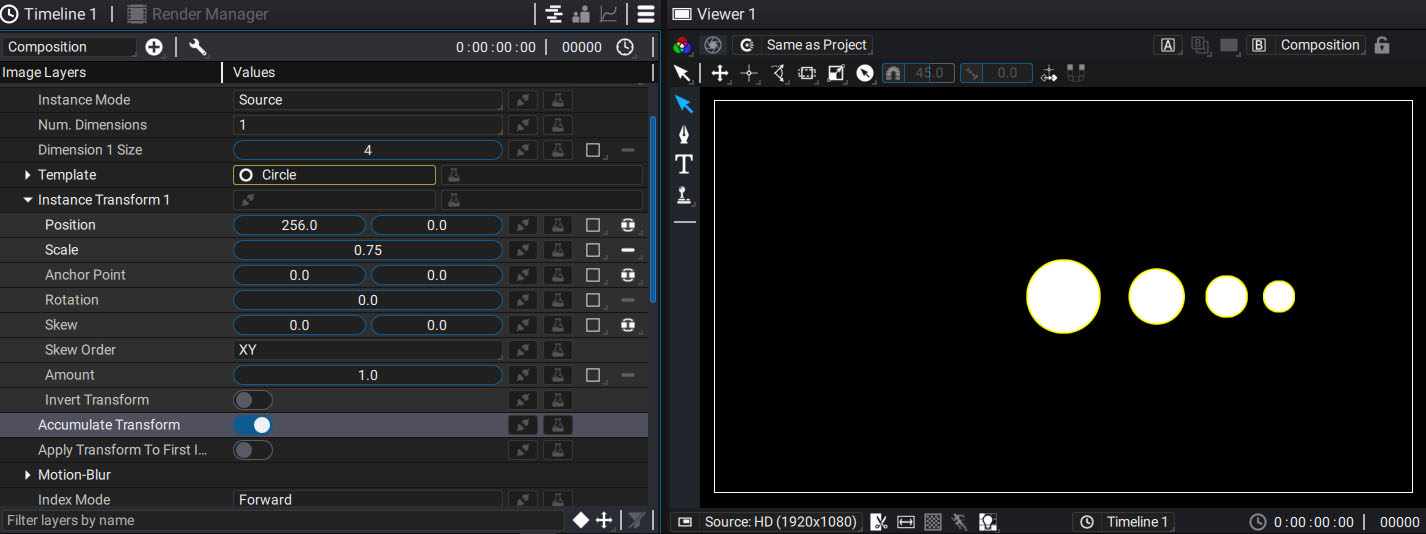Rasterization and caching
By using a Circle generator as a Template and setting the Dimension Size to 10, we can increase the scale to 1.25 and produce several duplicates that become larger and larger when Accumulate Transform is checked.
Varying the scale parameters can even simulate a perspective effect:

Since the circle is a procedural generator, the Instancer avoids pixelation effects when an instance is larger than the original circle. Rasterization follows the same principles as those in this section of the documentation. Even the procedural elements in a composition will be recalculated according to these new transformations if the Rasterization of the Template source is set to None.
Instancing and composition caching
In some cases, if the template used is a composition with the Enable Caching option enabled, it can be inefficient.
Let's imagine that the multiple instances only have transformations in which the scale never exceeds 1.0. If Enable Caching is enabled, Autograph will understand that it can compute this composition only once and instantiate the result; but, this is only valid if the composition is always the same for each instance, or has only experienced a simple time offset via the Instance time offset.
Every time an instance uses the composition, it is possible to request a variation of its content. In this case, a composition cache is produced for each of these variations, saturating the cache defined in your preferences more quickly. Older parts of the cache are gradually replaced by newer ones, in a cycle that becomes faster and faster as you increase the Dimension Size. If two instances use the composition under strictly identical conditions, then the cache will be used; but, the probability of this happening is low in many cases.